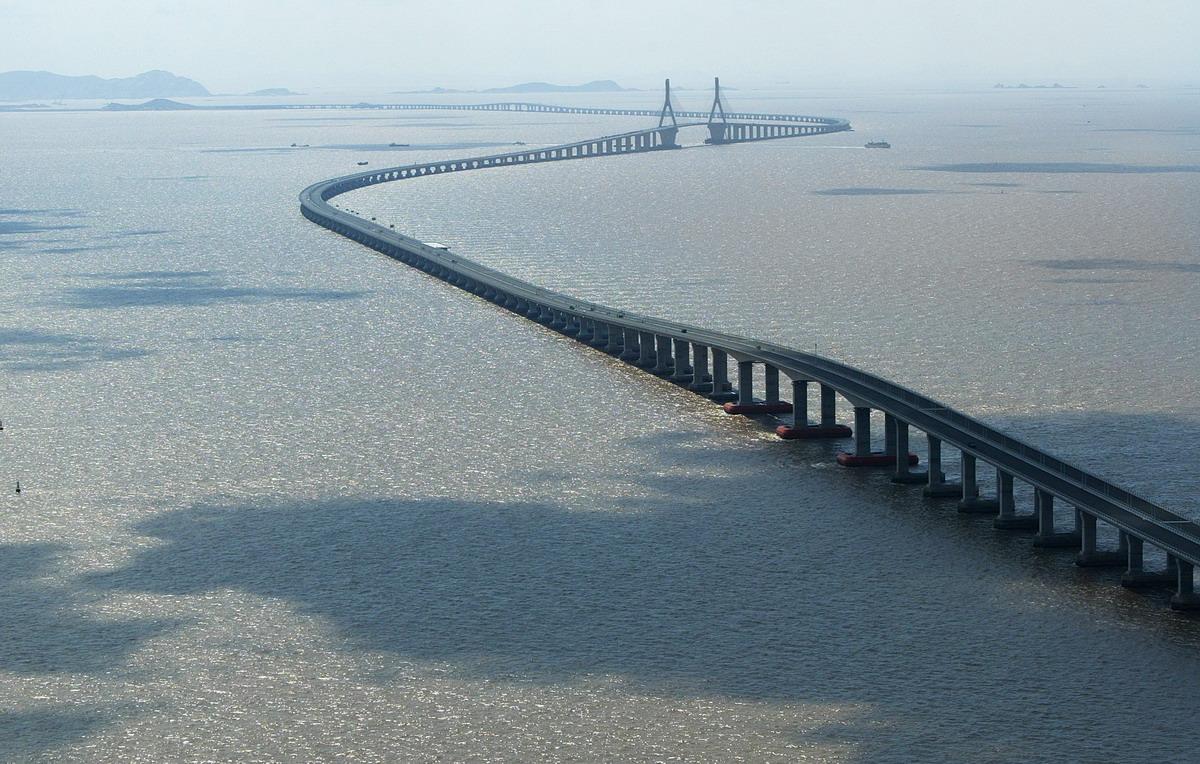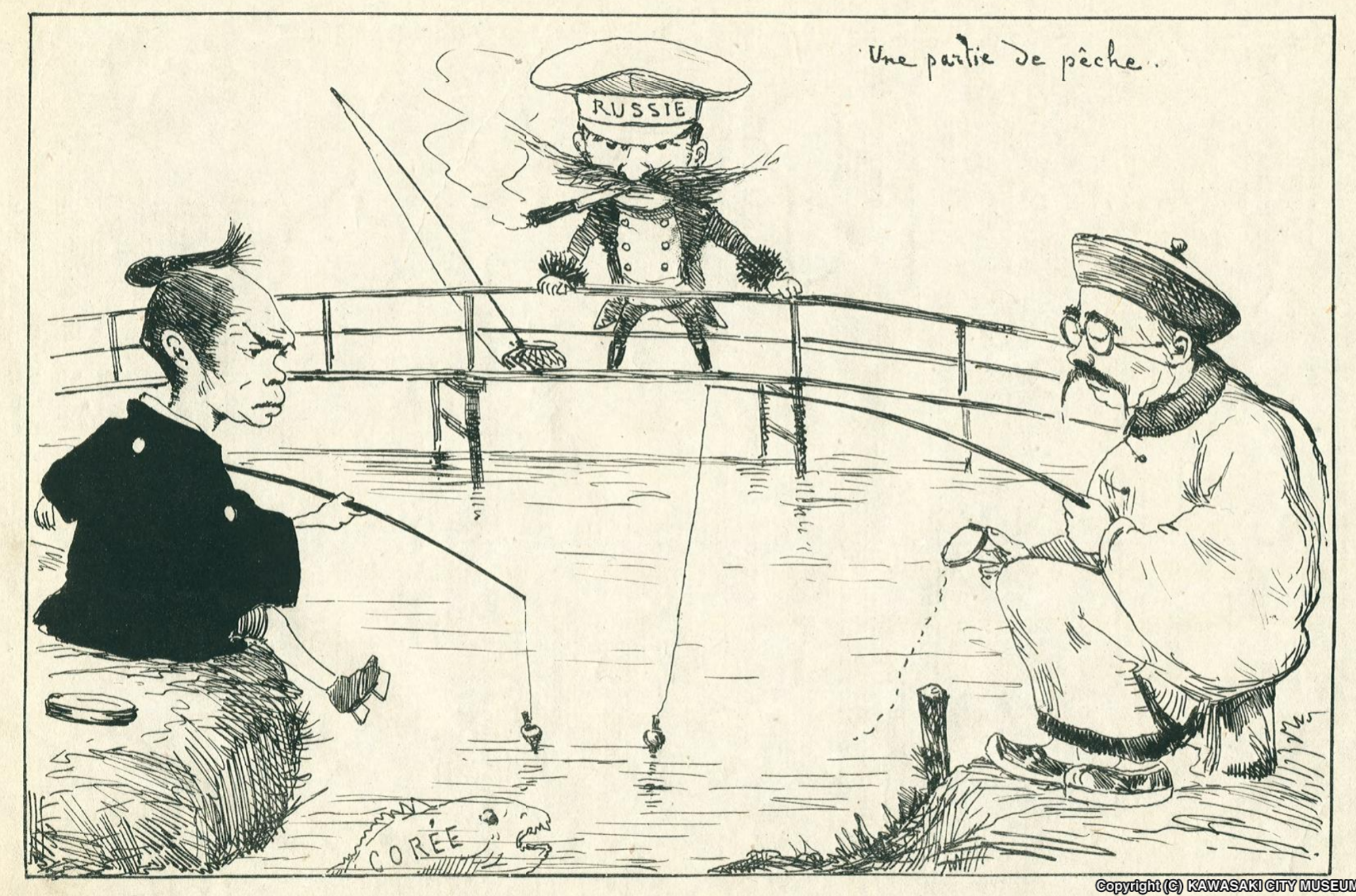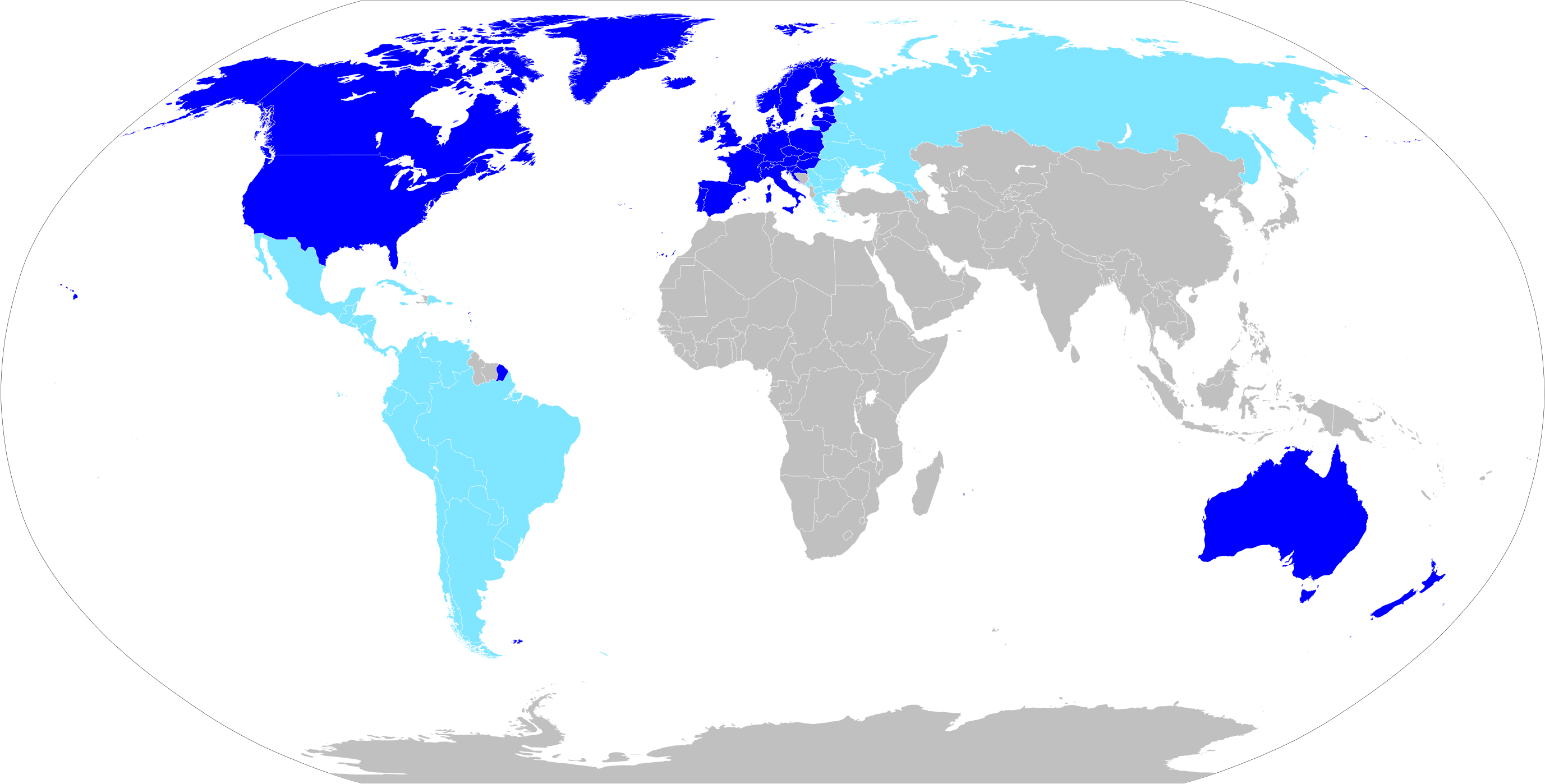|
Science And Technology In The People's Republic Of China
Science and technology in the People's Republic of China have developed rapidly since the 1980s to the 2020s, with major scientific and technological progress over the last four decades. From the 1980s to the 1990s, the government of the People's Republic of China successively launched the 863 Program and the "Strategy for Rejuvenating the Country through Science and Education", which greatly promoted the development of China's science and technological institutions. Governmental focus on prioritizing the advancement of science and technology in China is evident in its allocation of funds, investment in research, reform measures, and enhanced societal recognition of these fields. These actions undertaken by the Chinese government are seen as crucial foundations for bolstering the nation's socioeconomic competitiveness and development, projecting its geopolitical influence, and elevating its national prestige and international reputation. As per the Global Innovation Index ... [...More Info...] [...Related Items...] OR: [Wikipedia] [Google] [Baidu] |
People's Republic Of China
China, officially the People's Republic of China (PRC), is a country in East Asia. With population of China, a population exceeding 1.4 billion, it is the list of countries by population (United Nations), second-most populous country after India, representing 17.4% of the world population. China spans the equivalent of five time zones and Borders of China, borders fourteen countries by land across an area of nearly , making it the list of countries and dependencies by area, third-largest country by land area. The country is divided into 33 Province-level divisions of China, province-level divisions: 22 provinces of China, provinces, 5 autonomous regions of China, autonomous regions, 4 direct-administered municipalities of China, municipalities, and 2 semi-autonomous special administrative regions. Beijing is the country's capital, while Shanghai is List of cities in China by population, its most populous city by urban area and largest financial center. Considered one of six ... [...More Info...] [...Related Items...] OR: [Wikipedia] [Google] [Baidu] |
List Of Chinese Inventions
History of Science and Technology in China, China has been the source of many innovations, scientific discovery (observation), discoveries and inventions. This includes the ''Four Great Inventions'': papermaking, the compass, gunpowder, and History of typography in East Asia, early printing (both Woodblock printing, woodblock and movable type). The list below contains these and other inventions in ancient and modern China attested by archaeological or historical evidence, including List of inventions and discoveries of Neolithic China, prehistoric inventions of Neolithic and early Bronze Age China. The historical region now known as China experienced a History of science and technology in China, history involving mechanics, hydraulics and mathematics applied to horology, metallurgy, astronomy, agriculture, engineering, music theory, Artisan, craftsmanship, Maritime history, naval architecture and warfare. Use of the plow during the List of Neolithic cultures of China, Neolithic p ... [...More Info...] [...Related Items...] OR: [Wikipedia] [Google] [Baidu] |
Soviet Union
The Union of Soviet Socialist Republics. (USSR), commonly known as the Soviet Union, was a List of former transcontinental countries#Since 1700, transcontinental country that spanned much of Eurasia from 1922 until Dissolution of the Soviet Union, it dissolved in 1991. During its existence, it was the list of countries and dependencies by area, largest country by area, extending across Time in Russia, eleven time zones and sharing Geography of the Soviet Union#Borders and neighbors, borders with twelve countries, and the List of countries and dependencies by population, third-most populous country. An overall successor to the Russian Empire, it was nominally organized as a federal union of Republics of the Soviet Union, national republics, the largest and most populous of which was the Russian SFSR. In practice, Government of the Soviet Union, its government and Economy of the Soviet Union, economy were Soviet-type economic planning, highly centralized. As a one-party state go ... [...More Info...] [...Related Items...] OR: [Wikipedia] [Google] [Baidu] |
Self-Strengthening Movement
The Self-Strengthening Movement, also known as the Westernization or Western Affairs Movement (–1895), was a period of reforms initiated during the late Qing dynasty following the military disasters of the Opium Wars and Taiping Rebellion. The British and French Old Summer Palace#Destruction, burning of the Old Summer Palace in 1860 as Taiping Rebellion, Taiping rebel armies marched north, forced the imperial court to acknowledge the crisis. In 1861, Prince Gong and Grand Councilor Wenxiang, Wen Xiang proposed establishing an office to direct foreign affairs. Prince Gong was made regent, Grand Council (Qing dynasty), Grand Councilor, and head of the newly formed Zongli Yamen (a ''de facto'' foreign affairs ministry). Local Han Chinese officials such as Zeng Guofan established private westernized militias in prosecuting the war against the rebels. Zeng and his armies eventually defeated the rebels and prosecuted efforts to import Western military technology and to translate Wester ... [...More Info...] [...Related Items...] OR: [Wikipedia] [Google] [Baidu] |
Eight-Nation Alliance
The Eight-Nation Alliance was a multinational military coalition that invaded northern China in 1900 during the Boxer Rebellion, with the stated aim of relieving the foreign legations in Beijing, which were being besieged by the popular Boxer militiamen, who were determined to remove foreign imperialism in China. The allied forces consisted of about 45,000 troops from the eight nations of Germany, Japan, Russia, Britain, France, the United States, Italy, and Austria-Hungary. Neither the Chinese nor the quasi-concerted foreign allies issued a formal declaration of war. No treaty or formal agreement bound the alliance together. Some Western historians define the first phase of hostilities, starting in August 1900, as "more or less a civil war", though the Battle of the Taku Forts in June pushed the Qing government to support the Boxers. With the success of the invasion, the later stages developed into a punitive colonial expedition, which pillaged Beijing and North China for mor ... [...More Info...] [...Related Items...] OR: [Wikipedia] [Google] [Baidu] |
First Sino-Japanese War
The First Sino-Japanese War (25 July 189417 April 1895), or the First China–Japan War, was a conflict between the Qing dynasty of China and the Empire of Japan primarily over influence in Joseon, Korea. In Chinese it is commonly known as the Jiawu War. After more than six months of unbroken successes by Japanese land and naval forces and the loss of the ports of Lüshunkou (Port Arthur) and Weihaiwei, the Qing government sued for peace in February 1895 and signed the Unequal treaties, unequal Treaty of Shimonoseki two months later, ending the war. In the late 19th century, Korea remained one of China's tributary states, while Japan viewed it as a target of imperial expansion. In June 1894, the Qing government, at the request of the Korean emperor Gojong of Korea, Gojong, sent 2,800 troops to aid in suppressing the Donghak Peasant Revolution. The Japanese considered this a violation of the 1885 Convention of Tientsin, and sent an expeditionary force of 8,000 troops, which la ... [...More Info...] [...Related Items...] OR: [Wikipedia] [Google] [Baidu] |
Great Divergence
The Great Divergence or European miracle is the socioeconomic shift in which the Western world (i.e. Western Europe along with its settler offshoots in Northern America and Australasia) overcame pre-modern growth constraints and emerged during the 19th century as the most powerful and wealthy world civilizations, eclipsing previously dominant or comparable civilizations from Asia such as Qing China, Mughal India, the Ottoman Empire, Safavid Iran, and Tokugawa Japan, among others. Scholars have proposed a wide variety of theories to explain why the Great Divergence happened, including geography, culture, institutions, and luck. There is disagreement over the nomenclature of the "great" divergence, as a clear point of beginning of a divergence is traditionally held to be the 16th or even the 15th century, with the Commercial Revolution and the origins of mercantilism and capitalism during the Renaissance and the Age of Discovery, the rise of the European colonial empires, proto ... [...More Info...] [...Related Items...] OR: [Wikipedia] [Google] [Baidu] |
Imperial Examination
The imperial examination was a civil service examination system in History of China#Imperial China, Imperial China administered for the purpose of selecting candidates for the Civil service#China, state bureaucracy. The concept of choosing bureaucrats by merit rather than by birth started Imperial examination in Chinese mythology, early in Chinese history, but using written examinations as a tool of selection started in earnest during the Sui dynasty (581–618), then into the Tang dynasty (618–907). The system became dominant during the Song dynasty (960–1279) and lasted for almost a millennium until its abolition during the late Qing reforms, late Qing dynasty reforms in 1905. The key sponsors for abolition were Yuan Shikai, Yin Chang and Zhang Zhidong. Aspects of the imperial examination still exist for entry into the civil service of both China and Taiwan. The exams served to ensure a common knowledge of writing, Chinese classics, and literary style among state officials. ... [...More Info...] [...Related Items...] OR: [Wikipedia] [Google] [Baidu] |
Han Dynasty
The Han dynasty was an Dynasties of China, imperial dynasty of China (202 BC9 AD, 25–220 AD) established by Liu Bang and ruled by the House of Liu. The dynasty was preceded by the short-lived Qin dynasty (221–206 BC) and a warring interregnum known as the Chu–Han Contention (206–202 BC), and it was succeeded by the Three Kingdoms period (220–280 AD). The dynasty was briefly interrupted by the Xin dynasty (9–23 AD) established by the usurping regent Wang Mang, and is thus separated into two periods—the #Western Han (202 BC – 9 AD), Western Han (202 BC9 AD) and the #Eastern Han (25–220 AD), Eastern Han (25–220 AD). Spanning over four centuries, the Han dynasty is considered a Golden ages of China, golden age in Chinese history, and had a permanent impact on Chinese identity in later periods. The majority ethnic group of modern China refer to themselves as the "Han people" or "Han Chinese". The spoken Chinese ... [...More Info...] [...Related Items...] OR: [Wikipedia] [Google] [Baidu] |
Western World
The Western world, also known as the West, primarily refers to various nations and state (polity), states in Western Europe, Northern America, and Australasia; with some debate as to whether those in Eastern Europe and Latin America also constitute the West. The Western world likewise is called the Occident () in contrast to the Eastern world known as the Orient (). Definitions of the "Western world" vary according to context and perspectives; the West is an evolving concept made up of cultural, political, and economic synergy among diverse groups of people, and not a rigid region with fixed borders and members. Some historians contend that a linear development of the West can be traced from Greco-Roman world, Ancient Greece and Rome, while others argue that such a projection constructs a false genealogy. A geographical concept of the West started to take shape in the 4th century CE when Constantine the Great, Constantine, the first Christian Roman emperor, divided the Roman Em ... [...More Info...] [...Related Items...] OR: [Wikipedia] [Google] [Baidu] |
Four Great Inventions
The Four Great Inventions are inventions from ancient China that are celebrated in Chinese culture for their historical significance and as symbols of ancient China's advanced science and technology. They are the compass, gunpowder, papermaking and printing. These four inventions had a profound impact on the development of civilization throughout the world. However, some modern Chinese scholars have opined that other Chinese inventions were perhaps more sophisticated and had a greater impact on Chinese civilization – the Four Great Inventions serve merely to highlight the technological interaction between East and West. Evolution "The Three Great Inventions" was first proposed by the British philosopher Francis Bacon, and later, Walter Henry Medhurst, and other scholars agreed. Printing, gunpowder, and the mariner's compass were brought to Europe by Arab traders during the Renaissance and Reformation. Bacon, a leading philosopher, politician, and adviser to King James I of ... [...More Info...] [...Related Items...] OR: [Wikipedia] [Google] [Baidu] |
Gunpowder
Gunpowder, also commonly known as black powder to distinguish it from modern smokeless powder, is the earliest known chemical explosive. It consists of a mixture of sulfur, charcoal (which is mostly carbon), and potassium nitrate, potassium nitrate (saltpeter). The sulfur and charcoal act as fuels while the saltpeter is an oxidizer. Gunpowder has been widely used as a propellant in firearms, artillery, rocketry, and pyrotechnics, including use as a blasting agent for explosives in quarrying, mining, building Pipeline transport, pipelines, tunnels, and road#Construction, roads. Gunpowder is classified as a Explosive#Low, low explosive because of its relatively slow decomposition rate, low ignition temperature and consequently low brisance, brisance (breaking/shattering). Low explosives deflagration, deflagrate (i.e., burn at subsonic speeds), whereas high explosives detonation, detonate, producing a supersonic shockwave. Ignition of gunpowder packed behind a projectile generates ... [...More Info...] [...Related Items...] OR: [Wikipedia] [Google] [Baidu] |









